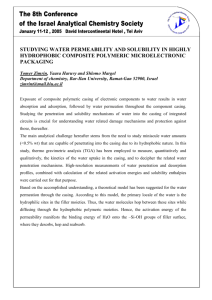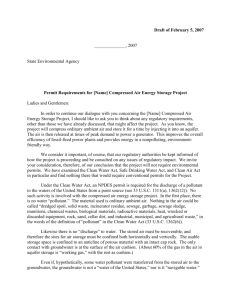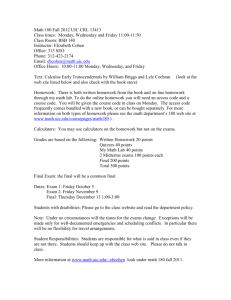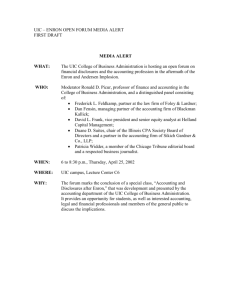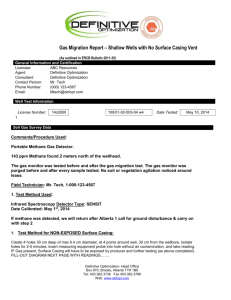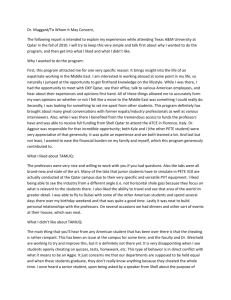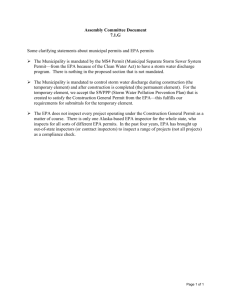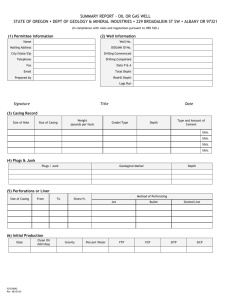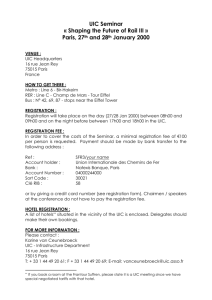Frank and Susan Zelman #1 ~ EPA UIC Permit # PAS2D020BCLE
advertisement
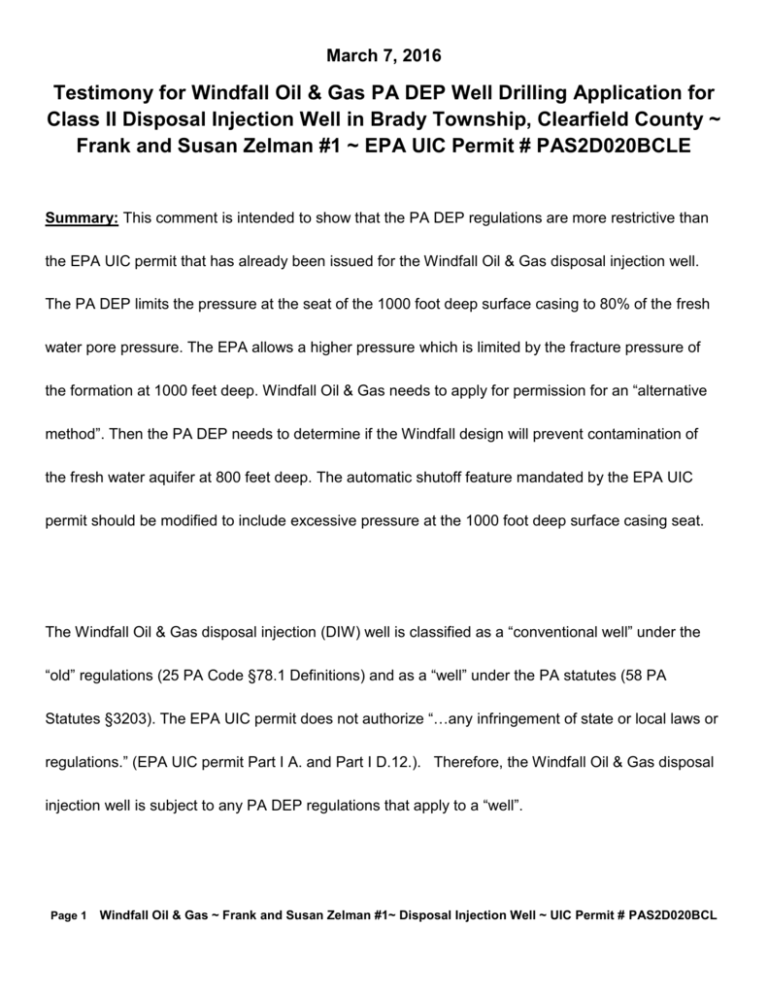
March 7, 2016 Testimony for Windfall Oil & Gas PA DEP Well Drilling Application for Class II Disposal Injection Well in Brady Township, Clearfield County ~ Frank and Susan Zelman #1 ~ EPA UIC Permit # PAS2D020BCLE Summary: This comment is intended to show that the PA DEP regulations are more restrictive than the EPA UIC permit that has already been issued for the Windfall Oil & Gas disposal injection well. The PA DEP limits the pressure at the seat of the 1000 foot deep surface casing to 80% of the fresh water pore pressure. The EPA allows a higher pressure which is limited by the fracture pressure of the formation at 1000 feet deep. Windfall Oil & Gas needs to apply for permission for an “alternative method”. Then the PA DEP needs to determine if the Windfall design will prevent contamination of the fresh water aquifer at 800 feet deep. The automatic shutoff feature mandated by the EPA UIC permit should be modified to include excessive pressure at the 1000 foot deep surface casing seat. The Windfall Oil & Gas disposal injection (DIW) well is classified as a “conventional well” under the “old” regulations (25 PA Code §78.1 Definitions) and as a “well” under the PA statutes (58 PA Statutes §3203). The EPA UIC permit does not authorize “…any infringement of state or local laws or regulations.” (EPA UIC permit Part I A. and Part I D.12.). Therefore, the Windfall Oil & Gas disposal injection well is subject to any PA DEP regulations that apply to a “well”. Page 1 Windfall Oil & Gas ~ Frank and Susan Zelman #1~ Disposal Injection Well ~ UIC Permit # PAS2D020BCL The deepest Underground Source of Drinking Water (USDW) at the location of the proposed Windfall disposal injection well is at a depth of 800 feet. The seat of the longest surface casing is at a depth of 1000 feet. The DEP regulations require the pressure at the seat of the longest surface casing to be 80% of the fresh water pore pressure (25 PA Code §78.73(c) and 25 PA Code §78.88 (d)(1)). The pressure gradient for fresh water is .433 psi/foot. By DEP regulations, the maximum allowable pressure is therefore 346 psi at 1000 feet deep. The confining zone below the deepest USDW at 800 feet deep starts at the seat of the longest surface casing, which is at a depth of 1000 feet. The EPA regulations require the pressure at the base of this confining zone to be less than its fracture pressure. (40 CFR §146.23 (a)(1) ). The well record for gas well #033-20597 (TD 3576 feet) shows “sand and shale” from 850 feet to 1370 feet deep. This shallow gas well is located 450 feet southwest of the proposed DIW. The fracture pressure of the “sand and shale” at 1000 feet deep cannot be known for sure without performing a leak-off test (LOT), but it is probably not greater than 1000 psi. This estimate is based on an assumed fracture pressure gradient of 1.0 psi/foot. At the seat of the longest surface casing, the EPA regulations could therefore allow the pressure to possibly be as high as 1000 psi at 1000 feet deep, depending on what estimate of actual fracture pressure is used. In addition to the regulatory conflict above, Windfall Oil & Gas will be installing an injection pump at the top of its disposal injection well. Also, there will be an injection tube inside of the long string Page 2 Windfall Oil & Gas ~ Frank and Susan Zelman #1~ Disposal Injection Well ~ UIC Permit # PAS2D020BCL casing. The long string casing corresponds to the production casing of a gas well. The combination of the injection pump pressure and the weight of the waste fluids filling the injection tube will result in the injection zone being pressurized to 6425 psi (EPA UIC permit Part III B. 4.). A pressure of 6425 psi is several thousand psi higher than the natural fluid pressure at that depth. Therefore, this disposal injection well will not manifest the same behavior as a conventional gas well. THE PA DEP regulations limit the pressure at the depth of 1000 feet to be only 346 psi or less. The EPA regulations could possibly allow a pressure as high as 1000 psi at the same depth. Since the PA DEP and EPA regulations conflict, the PA DEP therefore needs to require Windfall Oil & Gas to “…request approval from the department to use an alternative method or material for the casing, plugging or equipping of a well under section 211 of the act (58 PA Statutes §601.211) ” (25 PA Code §78.75). (The “act” must now mean 58 PA Statutes §3221 (Alternative methods), because the regulations are not yet totally up to date with the statute.) The well design criteria imposed by the EPA UIC permit allow for the possibility of the annulus between the longest surface casing and the long string casing to be filled with a combination of both liquid and gas. This situation could possibly occur if as little as 1% or less of the injected waste fluid finds a pathway around the cement seal at the bottom of the long string casing. Consequently, a Page 3 Windfall Oil & Gas ~ Frank and Susan Zelman #1~ Disposal Injection Well ~ UIC Permit # PAS2D020BCL gauge reading the gas pressure at the surface will not be an accurate indication of the total pressurein the annulus at the seat of the longest surface casing. The total pressure at 1000 feet deep will be the sum of the gas pressure at the surface plus the pressure caused by the weight of any liquid inside of the longest surface casing. The well operator is required on at least a quarterly basis to determine “the open flow on the annulus of the production casing or the annulus pressure if the annulus is shut in.” ( 25 PA Code §78.88 (a) and (b)(2) ). Also, “The operator shall submit an annual report to the Department identifying the status of each well with the mechanical integrity requirements of this section.” ( 25 PA Code §78.88 (e)). The EPA UIC permit requires an automatic shut-off device. “The well shall be equipped with an automatic shut-off device which would be activated in the event of a mechanical integrity failure.” (EPA UIC permit Part II C.2) Any “alternative method” approved by the PA DEP should impose the additional requirement that the automatic shut-off device be activated if the pressure 1000 feet deep at the seat of the longest surface casing exceeds whatever allowable limit is established. The EPA UIC permit does not include this feature. The “alternative method” approved by the department should include the requirement that a formation integrity test (FIT) be performed. A leakoff test (LOT) to determine the actual fracture pressure could Page 4 Windfall Oil & Gas ~ Frank and Susan Zelman #1~ Disposal Injection Well ~ UIC Permit # PAS2D020BCL damage the formation. A FIT establishes a level of pressure the formation is cabable of withstanding. The FIT should be performed after the 1000 foot deep casing is cemented and the well has been drilled about 10 feet below its seat. One solution to obtaining a measurement of the pressure at the seat of the 1000 foot deep surface casing would be to establish a hydraulic connection to a pressure gauge at the surface. The PGE /Yanity DIW design at the DEP hearing in Grant Township, Indiana County, proposed using drilling mud for the hydraulic connection. The actual composition of the drilling mud was not revealed at that time (June 1, 2015). Could it possibly be 70 to 95 pounds of Aquagel per 100 gallons of freshwater? A person with “hands-on” experience with disposal injection wells has suggested to this commenter that the solution to the annulus pressure problem is to operate the DIW with the annulus between the surface casing and long string casing left open. If the annulus between the long string casing and the 1000 foot deep surface casing is left open, provisions would have to be put in place to contain any overflow of injected waste fluids. Also, any escaping shallow gas would have to be captured. Page 5 Windfall Oil & Gas ~ Frank and Susan Zelman #1~ Disposal Injection Well ~ UIC Permit # PAS2D020BCL If the annulus in question was left open and was filled with waste fluids with the permitted specific gravity of 1.26 (EPA UIC permit Part III B.4.), then the pressure at the seat of the 1000 foot surface casing would be 546 psi. The FIT previously suggested would establish whether the “sand and shale” at 1000 feet deep can withstand 546 psi. If the FIT was performed with fresh water, a measurement of permeability could be obtained. The permeability would have to be minimal if the 80% fresh water pore pressure limit of 25 PA Code §78.73 (c) is waived. Page 6 Windfall Oil & Gas ~ Frank and Susan Zelman #1~ Disposal Injection Well ~ UIC Permit # PAS2D020BCL
